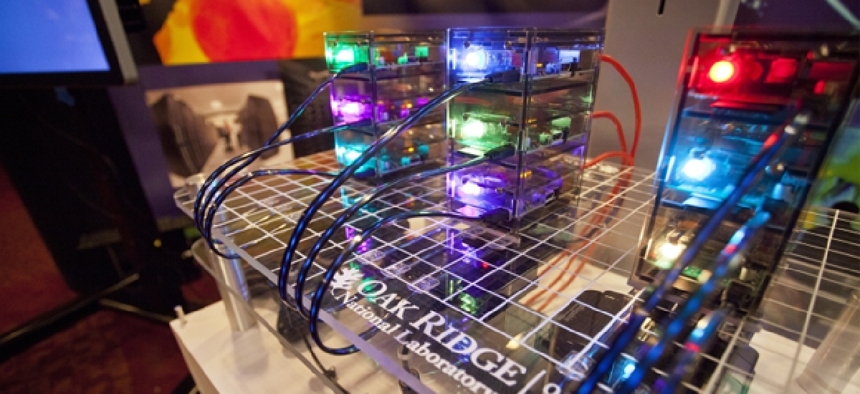Energy labs show off high-tech innovation


Connecting state and local government leaders
Directors of the Department of Energy’s national labs system joined Senate leaders to raise awareness of the labs’ accomplishments in high performance computing, energy innovation.
Directors of the Department of Energy’s 17 national labs joined Senate leaders in Washington, D.C., last week to help recognize National Lab Day, an event to raise awareness of the accomplishments of the labs in high performance computing, energy innovation and other high tech disciplines.
Senators Dick Durbin (D-Ill.) and Jim Risch (R-Id.) took the occasion to launch the Senate National Laboratory Caucus, which aims to increase awareness of the national labs as leaders in developing breakthrough technologies to address in those areas.
Durbin called the lab system “an integral piece of American innovation and success,” in pledging support for the caucus.
Among the DOE projects singled out for recognition were a "virtual reactor," which simulates conditions inside a reactor core to help nuclear power plants reduce operating costs and potentially use nuclear fuel more efficiently.
A demonstration in miniature of multi-core computing called "Tiny Titan,” which gives users hands-on experience of the power of high performance computing, was also showcased (pictured above). Titan is the most powerful supercomputer in the United States, and Tiny Titan was designed to help users understand how such machines work. It is a portable, nine-core parallel computer that can be built for less than $1,000 and that can demonstrate what each processor is doing -- essentially, the more colors that light up on the computers, the faster the program will run.
Another exhibits featured a demonstration of “additive manufacturing,” also known as 3D printing, showing how the technique could help address the technical challenges associated with product development.
"The national labs continue to advance science, clean energy and nuclear security in this country, as they have for decades," said Department of Energy Secretary Ernest Moniz told the group. "The labs also provide essential capabilities for university and industrial researchers – nearly 30,000 per year – and advance technology frontiers, such as high performance computing and advanced manufacturing.”




